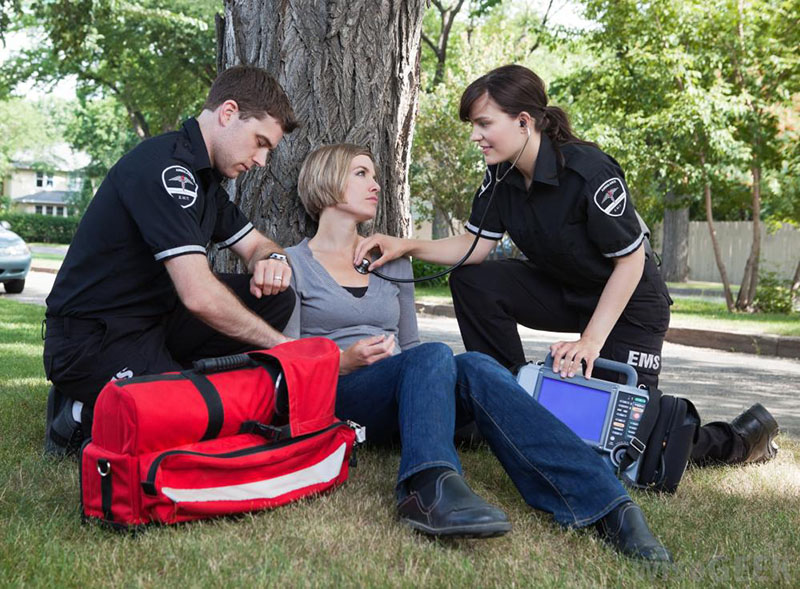Emergency medical services (EMS), a vital profession that is a noble one, offers a rewarding career centered around saving lives and providing essential health care. If you’re considering becoming an Emergency Medical Technician (EMT) or perhaps advancing to the highly regarded role of a paramedic you’re stepping into a field that has tremendous growth opportunities and a high demand for qualified professionals. This article will guide you through the steps of becoming an EMT, paramedic and explore the various training options that are offered.

Understanding the role and function of EMTs Paramedics, EMTs
Emergency Medical Technicians (EMTs) and paramedics are first responders who provide immediate medical care in the event of an emergency. They are trained to evaluate the health of patients, providing vital medical treatments and transporting individuals securely to medical facilities to receive further treatment. EMTs, paramedics, as well as other medical professionals, play an essential part in stabilizing patients during a critical moment and making quick, decisive decisions and providing caring care to those suffering from distress.
Step 1: Becoming EMT
You must complete the required training and education program, which may vary depending the certification level you’re aiming for. There are three levels of EMT certification:
1. EMT-Basic (EMT-B) The EMT-B is the entry-level certification and is based on 100-150 hours of instruction. EMT-Bs are certified to provide medical basics which includes CPR as well as bleeding control and the basic management of airways.
2. EMT Intermediate (EMT I): EMT I requires further training, and this can differ from state to state. In some areas the level is combined with EMT-B. In others, it takes between 200-400 hours of training, with expanded medical skills as well as intravenous therapy.
3. EMT-Paramedic is the highest level of EMT certification. It requires intense training that lasts between 1,000 to 1 800 hours. Paramedics have advanced skills in medical procedures, such as the administration of medication, reading EKGs, and managing airways.
Step 2: Applying for Paramedic Certification:
To become a Paramedic you first need to pass the EMTB or EMTI level as well as gain some practical experience. Then, you’ll be able to join the paramedic training course, which generally takes one to two year to complete. In the course, you will learn about advanced medical subjects. You will also acquire the expertise and understanding required to manage emergency circumstances.
Step 3: Exploring EMT Training Options:
You can choose from a range of options regarding EMT certification, based on the level you’d like to reach. EMT courses are often offered by medical trade schools as well as community colleges that cater to all certification levels. These programs provide a combination of classroom education as well as hands-on training and experience on the job and in clinical environments.
In addition, if you’re looking for a more thorough and comprehensive EMT program that can lead to a degree, colleges or colleges may provide EMT training at the level of EMT-Paramedic. These programs offer a more thorough knowledge of emergency medical services, and offer an understanding of patient care and medical decision-making.
Step 4: Ensure DSHS Aproved EMS Training:
For those who want to become EMTs and paramedics it’s crucial to make sure that the training program you select is DSHS certified. The Department of State Health Services has the authority to approve EMS programs to make sure they meet high standards of competency and education. By enrolling in a DSHS approved EMS training course, you can rest assured that you are receiving top-notch instruction and meeting the necessary requirements for certification.
An occupation as an EMT or paramedic is highly rewarding and respected. EMTs and Paramedics serve as first emergency responders and play a crucial part in saving lives and providing immediate medical treatment in the event of an emergency. To embark on this life-saving journey, those who want to become EMTs and paramedics must successfully complete the mandatory training and education programs. According to the level of certification desired, individuals can choose from various EMT programs, including medical trade schools, and universities.
When considering training options, it’s essential to confirm that the selected EMS training course is DSHS approved. This ensures that you’re getting a top-quality training that is in line with the requirements required to obtain EMT certification as well as paramedic accreditation.
The demand for skilled emergency medical professionals increases, EMS provides a wealth of career opportunities as well the chance to impact the lives of others. If you are an EMT Basic or want to become a paramedic, your dedication to critical care will reward you with an exciting and rewarding career in emergency services.
